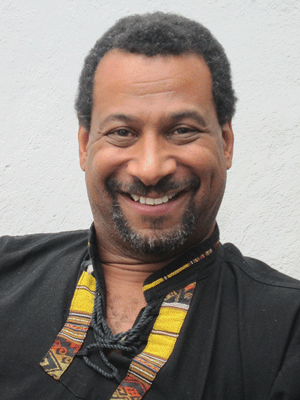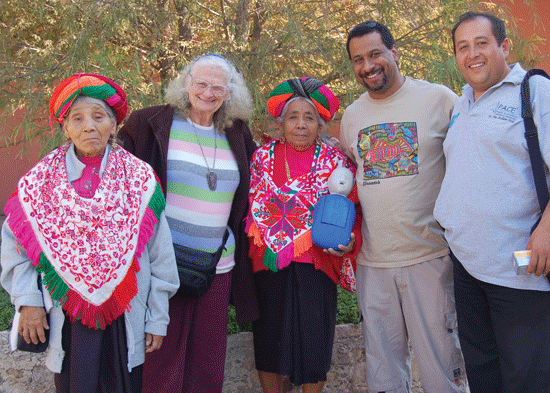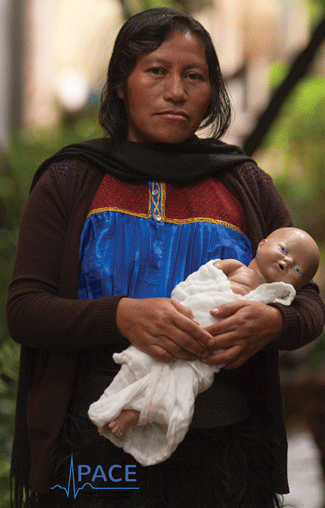International medicine is an ever-growing and expanding specialty within emergency medicine and other medical fields. Amid all of the growth, many physicians have stayed true to their ideals and values of delivering quality care to those abroad and strengthening international health care systems. Dr. Haywood Hall founded the Pan American Collaborative Emergency Medicine Development Program (PACEMD) and continues to be an advocate for health care, emergency systems, and education in Mexico and Latin America.
Centro PACE
San Miguel de Allende
Guanajuato, Mexico
This Q & A with Dr. Hall, conducted by International Committee Chair Dr. Joseph M. Reardon, offers insight into the dynamic world of international emergency medicine and PACE's contributions to its development.
JMR: “You were trained in emergency medicine in the United States. How did you become interested in EM in Mexico?”
HH: “I'm 58 years old, but I've lived for about 150 years. I lived in Mexico until I was 8 because my parents wanted to be out of the country. I moved back to the United States and went to public school. By 10th grade, I dropped out. After that I was a musician, a piano tuner, then an electric meter reader in New York. I was reading electric meters one day in a hospital and the back of the meter was outside the emergency department, and I thought, ”˜Wow, what about emergency medicine?'
“School meant nothing to me until I was going to do emergency medicine. My friend said to me, ”˜Man, you're smart; you can do this.' After I got my GED, I started volunteering at a hospital and got into an open admissions program at the City College of New York. I went on to Baylor for medical school, but they didn't have an EM program, so I wound up in New Mexico. I graduated from the University of New Mexico in 1991 after completing both an internal medicine and emergency medicine residency program. After several years as a full-time emergency medicine doctor, I started getting more interested in international work and thought there was something else I should do with my background. So I went down to Mexico.
“On the way to Mexico I ran into a big car accident in Sonora. It was a real disaster! It took a while for the Red Cross to get there, and when they did, they really didn't know very much. I got one guy on an ambulance and intubated him, then placed a chest tube that I made out of an ET tube; it was pretty dramatic. It was one of those real MacGyver medicine moments.
“I ended up in San Miguel de Allende and decided that was my calling – to be in Mexico and to be training people. That was around 1996. I wound up working with the Health Ministry there developing an EMS academy. I helped them set up an ultrasound course, an advanced airway course, and I brought in a nursing trauma course.”
JMR: “How did you manage your time as you started PACE [Programa de Actualización Contínua en Emergencias – Continuous Update Program in Emergencies]?”
HH: “I supported myself as a migrant EM worker. I would work five days on, five days off in different emergency departments for somewhere between 10 and 15 shifts a month for decades.
Somewhere around 2000, I was contacted by some medical students and residents who asked me to start a medical Spanish school, so we did. We have had about 500 people since then, and provide CME credit through the University of New Mexico.
“We trained people from emergency departments and from the Red Cross. We were developing our training center on the side, and we eventually became an American Heart Association Center. I started off with the idea that we didn't need canned courses, but it was challenging, as the Health Ministry was very clear that they needed these courses taught.
“One of our students came and wanted to be trained in how to teach neonatal resuscitation for an emergency obstetrics course, ALSO [Advanced Life Support for Obstetrics] in Guatemala. I took it to the Health Ministry and they said, ”˜You have to bring this course to all of Mexico.' This is how the ALSO program was launched in Mexico. Back then, few emergency medicine docs had heard of this course. And after a few years of teaching ALSO the feds came out with a position paper saying that this was the model for training emergency obstetrics. We've trained 10,000 people in this course now.
“I originally believed this should be a nonprofit organization, and nonprofits are funded by donations or grants. The health ministry told me they couldn't donate or give me a grant, but they could buy my courses. It became one of the first social entrepreneur projects in Mexico, and we've trained over 30,000 people.
“Over time, we developed a lot of strong ties with the Sociedad Mexicana de Medicina de Emergencias. Then I became ambassador to Mexico for ACEP. Our focus has been on community-based training in emergency-based care, rather than the specialty, because there is poor emergency care without training at all levels.”
JMR: “It sounds like you have had success after success. What has been the biggest barrier to building up the PACE program?”
HH: “This whole thing has been challenging in many ways. All that success came at a huge price. Anything that I could have done wrong I have done wrong at some point! There was a lot of wear and tear. My income decreased a lot because I was doing a major project on the side. It was very stressful on my family. The other part is that I've been so far off the radar from mainstream academic medicine in the states that it gets kind of lonely out here sometimes. Most of what I'm doing does not fit your normal mold for an emergency doc or an academic doc, so there's a price to pay for it.”
JMR: “How is the residency training curriculum structured in Mexico?”
HH: “There's a new residency in León. Three of the faculty there are PACE faculty. There's a residency now in pretty much every state in Mexico. There may be somewhere near 4,000 EM trained docs now. But when I first started here there was really only one emergency medicine specialist other than myself in Guanajuato, and now there are about 30.”
JMR: “What is the difference between the residency structure in the Mexican system and in the US?”
HH: “It's very much patterned after the U.S. It's a three-year-long program. Remember that these docs go straight from secundaria [high school] to medical school.
“They started a couple of years ago a reanimación [intensive care] fellowship. They have a toxicology fellowship, but they don't have a lot of other fellowships. Pediatric emergency medicine is pretty much its own channel; up to now they have not blended very much. Even now we feel like there's a real shortage of emergency docs, and so what they have tried to do is create a program called Semi Presencial (it means ”˜blended learning') where they take general docs who work in emergency departments and rotate them out and circulate them in academic centers for a year to make them board-eligible. It was an attempt to increase skills and it probably has done that. I cannot say, however, that it has been as successful, in terms of acceptance by more traditionally trained specialists.”
JMR: “How do you split your time between clinical and administrative work?”
HH: “I don't do much clinical work in Mexico. I have so much administrative work to do here. I have facilitated other people doing that. I do a fair amount of telemedicine nowadays, and that has worked out pretty well because I can work from anywhere.”
JMR: “Do you feel that your Mexican colleagues treat you differently because of your background?”
HH: “I think that my Mexican colleagues are very qualified. They are very smart, motivated people. They have a lot of experience. Almost any of them that I can point to can teach Mexicans better than me. It's funny because there's this whole external validation where if you were trained on the outside, that means a lot to people. So I think that by being an outsider from the States and by being able to bring people down here, like Judith Tintinalli and others, we've been able to reinforce the standing of emergency medicine.
“As an international doc, and being U.S.-trained, I've been able to get into a lot of other places that might have been quite a bit harder for them to get into. It's a young specialty, and I've been able to open a lot of doors. In practice, emergency obstetrics wasn't being taught to mainstream emergency physicians here. There is a lot of third-trimester obstetrics in community hospitals. We've been able to get to the highest levels of government and work on some other projects, and I think my background has provided more support.
“Because of our success with the ALSO program we were also invited to be on a federal task force to develop training for palliative care. In Mexico, half of the people who die need some kind of palliative care and don't have access to it. Because we have been successful in the obstetrics program, we've been asked to develop a community-based palliative care program.”
JMR: “How helpful is an international EM fellowship for residents who want to pursue your type of work?”
HH: “The problem with fellowships is that a lot of them are the pet project of some faculty members. You have to be very careful and realize what it is that you are trying to accomplish. The longitudinal projects to me are important, but if you just want to go hang out in a clinic somewhere, there are probably easier ways of doing that than tying yourself to another two years of training. So you want to know what the value proposition is.
“We're perfectly situated to do all kinds of stuff here and some of it is development, which is great. The Sistema de Urgencias de Guanajuato [Guanajuato EMS System] is here. We're starting a bit with mobile health and we could do a really fantastic project with EMS. We have endless courses that we're giving all the time. You could come in and not know Spanish AND not know ACLS and we could put you there until you eventually get it. So I think there's a really rich opportunity to do stuff, and we're very well-prepared. Most academic centers are very protective about not sending their people internationally. They need the warm bodies.”
JMR: “What would you say to residents who are worried about the security situation?”
HH: “Most of us, especially us EM people, know there are a lot of micro-environments out there that can be dangerous. The vast majority of people who get into trouble are typically doing something risky. So if you look at the actual numbers, the total number of American citizens murdered in Mexico was 100 last year; 150,000 U.S. citizens cross the border every day, and there are 1 million Americans who live here. Mexico has 24 million tourists who come through a year. Is it impossible for something bad to happen? No. Emergency medicine programs are often in some city where you have to be situationally aware. It has been a much different thing along the border. However, Mexico City last year had one-third the murder rate of Washington, D.C., so the attributable risk is low.”
JMR: “What questions should students applying in emergency medicine ask about a residency program's international EM opportunities?”
HH: “They need to come in waving an international emergency medicine flag. They need to say, ”˜You don't have that? Well, I'm not going to come here.' The people who are in the international emergency medicine front need to take initiative, and they want that in their residency program.
“Doing rotations abroad is often a fight with the local CFO rather than what should be the overriding educational mission. Residents represent income and manpower. I would ask specifically how many people have gone abroad, where they have gone. I would not fall for the ”˜We sent one person, two years ago, somewhere' statement.”
JMR: “How do organizations like ACEP and IFEM [the International Federation of Emergency Medicine] support your work, and what is your vision for the future international growth of EM organizations?”
HH: “I was not that involved with organized emergency medicine until I realized that I wanted to do international work, and once I realized that, I realized that I needed to go and get the backup of the real experts who had been doing this before. When I started, ACEP was the only one, and there weren't a lot of other options. I know that AAEM (American Academy of Emergency Medicine) has been involved internationally in the past decade as well.
When I got started, ACEP had very few Latin Americans involved in the Section. The International Section was not very Latin American at all. I worked over many years to try to bring a Latin American focus, and I worked within IFEM to bring in more Latin American countries. In order to be a full member of IFEM you have to have a residency program, and you have to be recognized by the government. We”˜ve brought Panama, Venezuela, Ecuador, and Cuba in as IFEM members. I've been involved with the first IFEM International Symposium in San Miguel de Allende in 2011. We will be bringing the International Congress of EM to Mexico City in 2018. I am working on a plan for an IFEM Symposium in Cuba.”
JMR: “Does PACEMD have opportunities for residents from the U.S.? How do residents get involved?”
HH: “If they want to contact us, we have set up one-month rotations. We don't require Spanish language ability. We strongly believe people need to learn it, and they need to have it where they can at least take a history and physical. Depending on their language and clinical abilities, we place them in a variety of clinical settings. The prehospital system is run by the Red Cross and the Health Ministry allows us to place people in clinics, emergency departments, and mobile health units. There has to be a lot of flexibility on the part of the rotator. Our approach is to do a couple of hours a day of intensive Spanish where we supersaturate your receptors and then we put you into a clinical situation. It's amazing how fast one learns like that. If people are coming to us with more than a language acquisition requirement and they have a real interest in some area, then we bend over backwards to make that work for them and figure out where to place them.”






